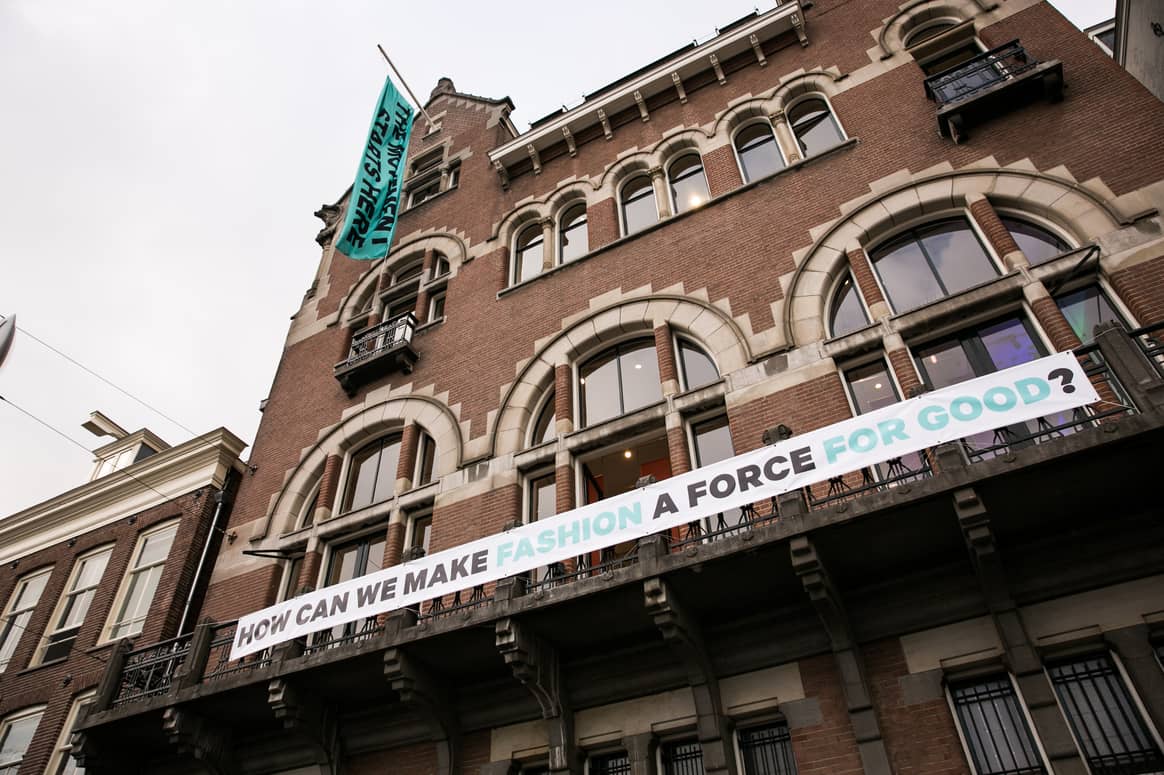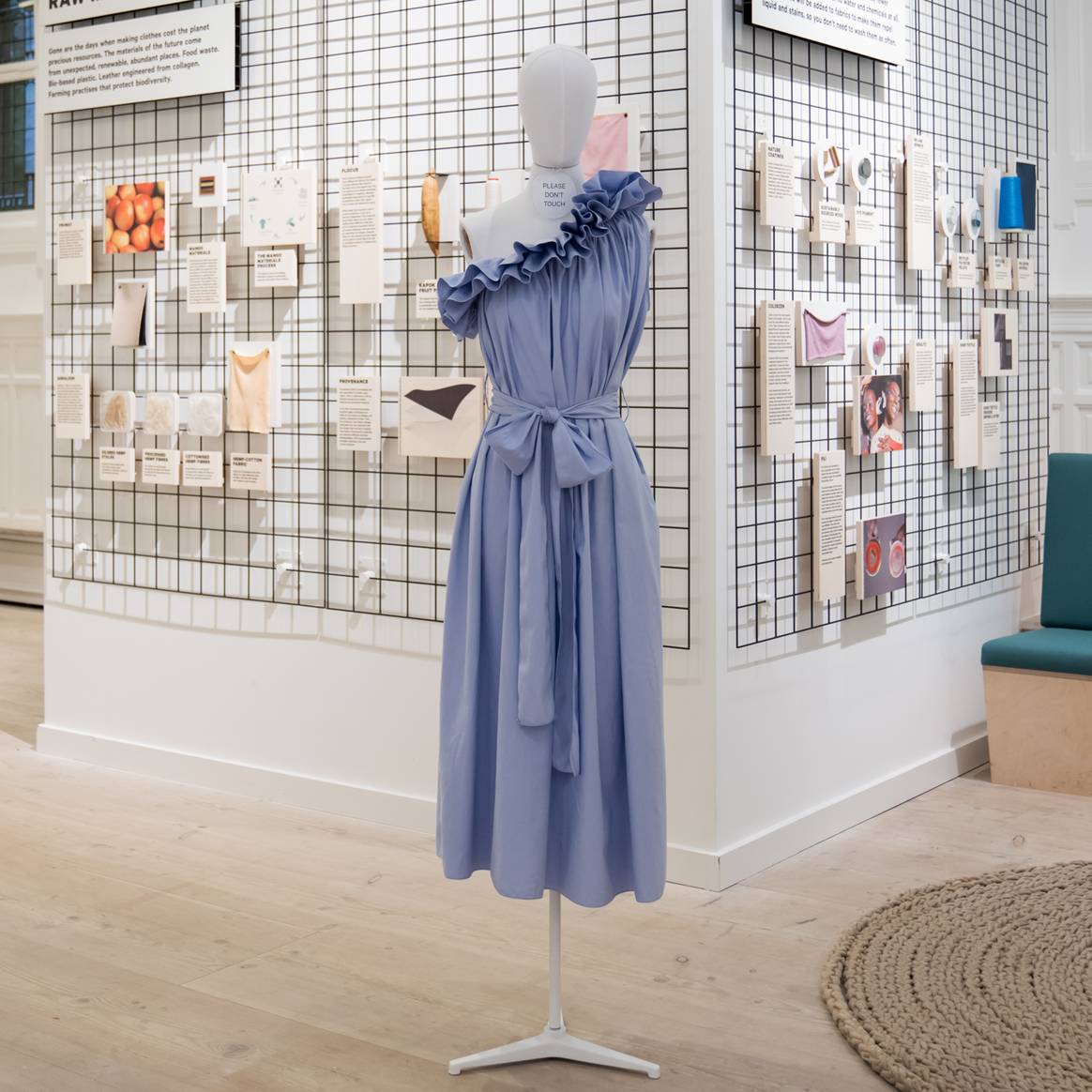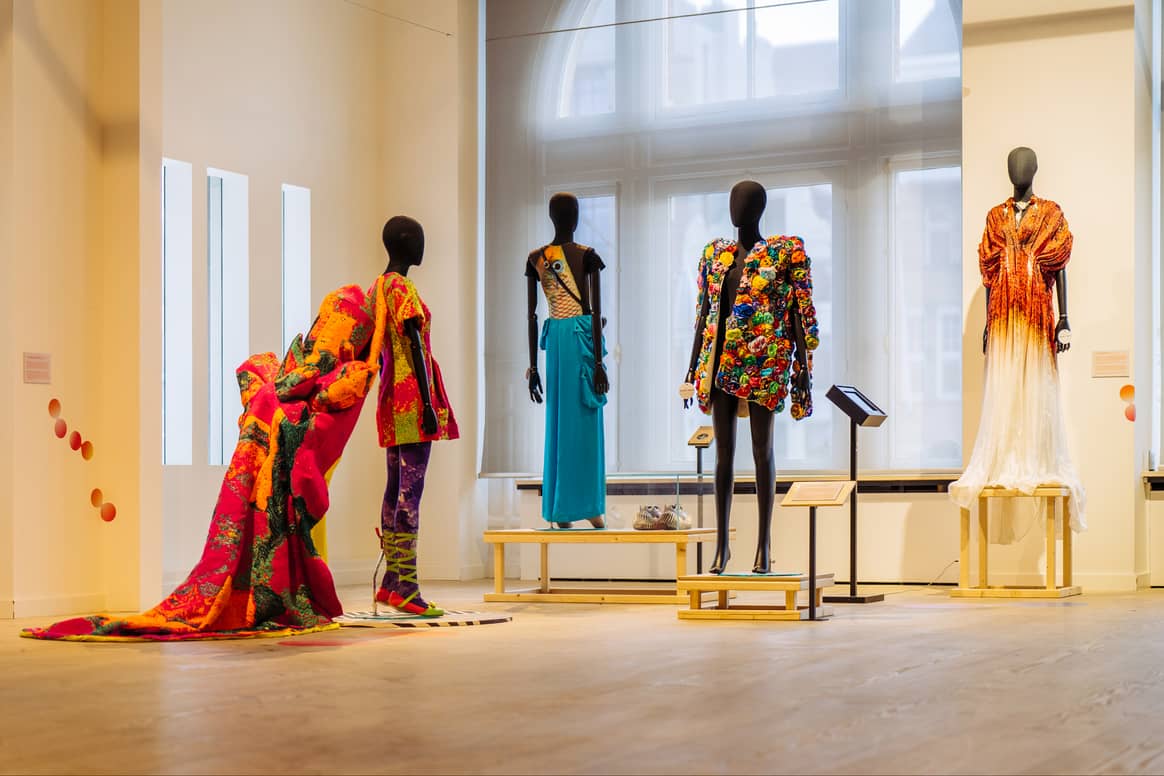Engaged in the clothing industry for 20 years.

Six years of the Fashion for Good Museum: How to tell the story of sustainable fashion?
The Fashion for Good museum is closing its doors. After six years of putting sustainable textiles and fashion stories in the spotlight, the organisation Fashion for Good will focus on other initiatives. In those six years, however, FFG has learned plenty about showcasing these stories and how to make sustainability accessible. In an interview with FashionUnited, the organisation shares its insights.
On March 30, 2017, the Fashion for Good initiative was announced by the C&A Foundation (since renamed Laudes Foundation). The initiative focuses on driving collective change in the fashion industry. Fashion for Good would also get a physical location at Rokin 102 in Amsterdam. That this location would be used for a museum only became clear later. In October 2018, the Fashion for Good Museum opened its doors.

The Fashion for Good Museum functioned as a kind of ‘laboratory for sustainable museum practices’, according to the team behind the museum. “For six years, we developed as many projects, exhibitions, educational programmes, collaborations and events as possible. We did this in all kinds of different ways to make them as successful as possible,” Fashion for Good’s Anne-Ro Klevant Groen told FashionUnited. According to the museum team, it had a unique position within the cultural sector for conducting experiments. For example, the Fashion for Good Museum did not have to rely on a museum collection as a starting point. This made its organisation flexible and dynamic. The team at Fashion for Good has diverse expertise and backgrounds, which allowed for a lot of experimentation.
However, setting up and professionalising a museum takes time, the organisation emphasised. This did not come without challenges. For example, the building on the Rokin in Amsterdam was a building without climate control. This meant that objects could not be borrowed from other museums. The building also had limited storage space and materials had to be used sparingly. For its own collection, a ‘co-collection policy’ was developed in which the museum was co-owner of the objects, together with the designers or relevant innovators who were involved in creating the object. The museum always made decisions about the object in conjunction with the co-owners.

How do you exhibit sustainable fashion? Three tips from the Fashion for Good Museum
Through the many and diverse exhibitions and programs that Fashion for Good Museum has set up over the past six years, it has also learned valuable lessons about exhibiting sustainable fashion and material innovations:
Getting a wide audience interested in sustainable fashion can be difficult. When asked, Klevant Groen admits that sustainable fashion is not a top priority for many people because there are other things going on in their lives. “You can only worry about this topic if you have a secure base. It is a privilege to be able to be involved in this and therefore, if you can do this, it is all the more important to be able to make a positive contribution to the changes needed for people and the environment.’ Klevant Groen said, adding that shortly after the opening of the museum, most of the visitors were women between 18 and 35 with existing knowledge of sustainability and fashion.
“We initially focused on the ‘conscious’ visitors, but soon realised we needed to focus on the ‘curious’ and ‘unconscious’ target group to bring about real change. These are the people who can benefit most from the knowledge and stories behind the fashion industry and therefore be encouraged to change their consumption habits.

Fashion for Good Museum therefore looked at the definition of the target group for each project, exhibition and public programme. The offer in the museum was adapted per defined target group, instead of trying to appeal to a broad, general audience. “This proved successful, especially during the Knowing Cotton Otherwise exhibition, which was activated through a wide range of different events and an educational programme. Over the course of six years, the Fashion for Good Museum managed to expand its reach exponentially, by connecting with a wide range of communities, schools of all educational levels and local organisations that try to lower the threshold for access to culture. The museum also successfully welcomed many people who would not routinely visit museums and gave future fashion professionals and consumers more opportunities.”
Fashion for Good shares lessons learned about sustainable fashion exhibitions
In the end, the museum welcomed 115,000 visitors. Thanks to the special Good Fashion Action Plan that visitors could put together in the museum (a list of actions with which they can change their fashion (consumption) behaviour) and email to themselves, the museum was able to stay in touch with visitors with their permission. For example, visitors can indicate ‘I promise not to buy any new clothes for a month’ or ‘I will only wash with cold water from now on’. Immediately after the museum visit, visitors were asked about their experience in the museum, but two weeks later visitors were also asked again to see if they had made an extra change in their behaviour. An astonishing 98 percent of respondents indicated that they had changed their behaviour.
Nevertheless, the difficult decision was made to close the museum so that the mission-driven Fashion for Good organisation can focus on helping scale innovative businesses within the fashion industry. The mission as an information platform will continue. All the insights, tools and educational programmes that the museum has collected will be made available for free on the Fashion for Good website. The organisation will also continue with the Innovation Platform.
“As Fashion for Good navigates the changing landscape of the fashion industry, we stand ready to intensify efforts through our Innovation Platform. This move is not just about adapting to change, but about leading it with focused and effective action. We are making operational adjustments to more effectively drive the adoption of innovation across the industry. This strategic shift goes hand in hand with the decision to close the Fashion for Good Museum,” said Katrin Ley, managing director of Fashion for Good.
This article was originally published on FashionUnited.NL. Translation and edit from Dutch into English by Veerle Versteeg.


